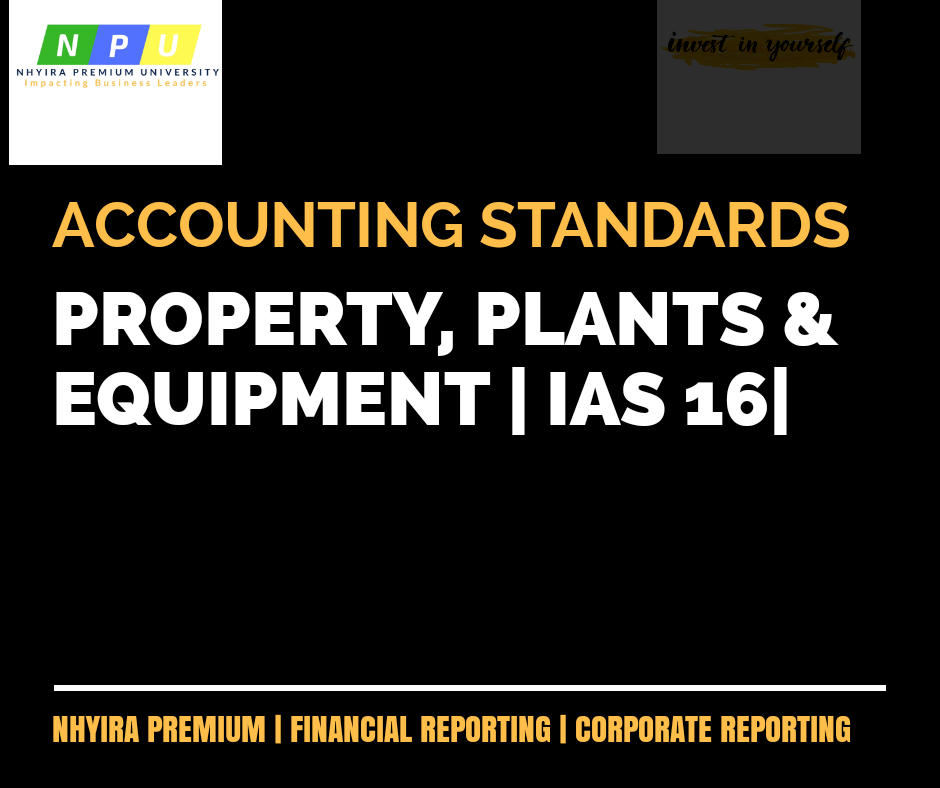Module objectives:
After going through this module, you will be able to:
- Understand the recognition criteria for Non – Current Assets
- Understand the measurement basis
- Prepare an Extract of financial statements for Non – Current Assets
- Disclosure requirements of Non – Current Assets
When talking about PPE, there are two issues to be discussed. These are:
- Initial measurement:
To discuss the initial measurement of asset, two things have to be considered:
Capital expenditure:
These are the expenditure that has to be capitalised in the financial statements. The cost of capitalisation includes:
- Initial cost:
- Import duty
- Instalment cost
- Intended use
- Delivery cost
NOTES: This is recognised in the Non-Current Asset Register of the company.
[vooplayer type=”video” id=”NjMxMjI=” float=”right-25%” ]
Revenue expenditure:
Other expenditure in relation to assets are treated as revenue expenditure and recognised in Income Statement. These include:
- Repair cost
- Insurance cost
- Maintenance cost
- Subsequent measurement:
After the asset has been recognised, the subsequent measurement of the asset has to be considered. There are two methods to be considered:
- Cost model:
This is where the asset is valued using the carrying value of the asset. Thus Value of asset = Cost- Accumulated depreciation
- Revaluation model:
This where the asset is valued based on the fair market value of the asset. Thus Value of asset = Fair value – Accumulated depreciation.
Issues to be considered in relation to revaluation:
Upward revaluation.
Example; if carrying value of the asset is $10 and the revalue amount is $12, it means the asset has increased in value.
Accounting treatment:
Debit PPE $2
Credit Revaluation Reserve $2
When the asset is sold,
Debit Revaluation reserve $2
Credit retained earnings $2
Accounting Policy:
Because of the upward revaluation, the value of the asset is going to increase and since we charge depreciation on the revalue amount, the total depreciation charged for the high will also be high. It means profit will fall and shareholders will receive fewer dividends. As such, the entity has to compensate them for this loss.
Annual transfer:
It means we take the revalue excess amount, thus
Entry into accounts;
Debit Revaluation Reserve $0.2
Credit Retained Earning $0.2
This increases the retained earnings so that it can be distribution to shareholders.
Other discussions will be made in class/video!!!!!
Question:
Adom Ltd acquired a property on 1 January 2007 at a cost of GHC400, 000 and immediately occupied it as office premise. On acquisition, it was estimated to have a useful life of 50 years. Subsequent to its acquisition, the asset was measured at depreciated cost until 1 July 2012 when management of Adom Ltd decided to convert the building into an investment property (mainly for rentals). Following this decision, the property was fair valued at GHC373,800. Adom Ltd adopted the fair value model for subsequent measurement of the investment property. At 31 December 2012, it was fair valued at GHC380,000.
Required: Account for the treatment of this property in the 2012 financial statements of Adom Ltd.
Solution:
Income Statement for the year ended 31 December 2012:
Expenses GHC
Depreciation charge 4,000
(400,000/50 years x 6/12)
Other income
Fair valuation surplus-Investment Property 6,200
380,000-373,800
Statement of Financial Position as at 31 December 2012
| Non-Current Assets | GHC | ||
| Investment Property
Equity |
380,000 | ||
| Revaluation Surplus | 17,800 |
(373,800 – 356,000)
Fair value surplus 6200
As at 1 July 2012 where the asset was changed to an Investment Property, the asset has been depreciated for 5 years six months (1 January 2007 – 1 July 2012), hence the Value of the asset was GHS 356000
Bibliography
- Association of Certified Chartered Accountants – United Kingdom BPP F7
- Institute of Chartered Accountants – Ghana – Study Manual
- London School and Business and Finance
- COM
- com
- Premium Education Hub’s Library
- Lecturer’s Book on Management Accounting
Take the course here

